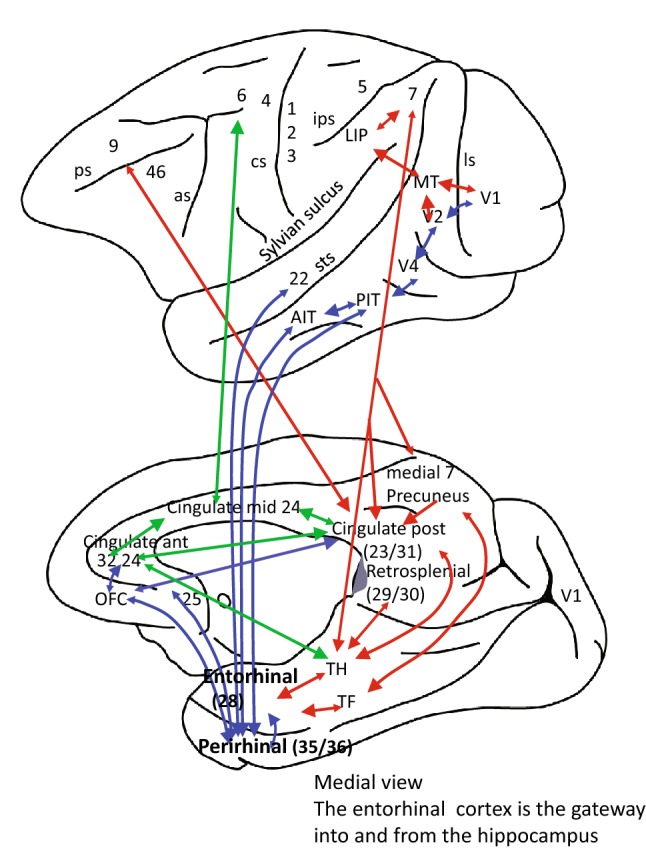Fig. 1.

The connections of the anterior and posterior cingulate cortex with their input areas, and their outputs to the hippocampal memory system. A medial view of the macaque brain is shown below, and a lateral view is above. The green arrows show the convergence of reward or outcome information from the ACC and of information about actions from the posterior cingulate cortex to the midcingulate motor area, which then projects to premotor areas including the premotor cortex area 6 and the supplementary motor area. This provides connectivity for action–outcome learning. The anterior cingulate cortex receives reward outcome information from the orbitofrontal cortex (OFC). The posterior cingulate cortex (23 and 31) receives information about actions from the parietal cortex. This cingulate connectivity is compared with that of the hippocampus, which receives information from the ventral ‘what’ processing stream (blue) and the dorsal ‘where’ or ‘action’ processing stream (red), as described in the text. as, arcuate sulcus; cs, central sulcus; ips, intraparietal sulcus; ios, inferior occipital sulcus; ls, lunate sulcus; retrosplenial cortex (29, 30) is the small region in primates including humans behind the splenium of the corpus callosum shaded grey: it is present in rodents, which do not have a posterior cingulate cortex (Vogt 2009); sts, superior temporal sulcus; 4, 6, motor and premotor cortex.
Developed from Rolls and Wirth (2018)
